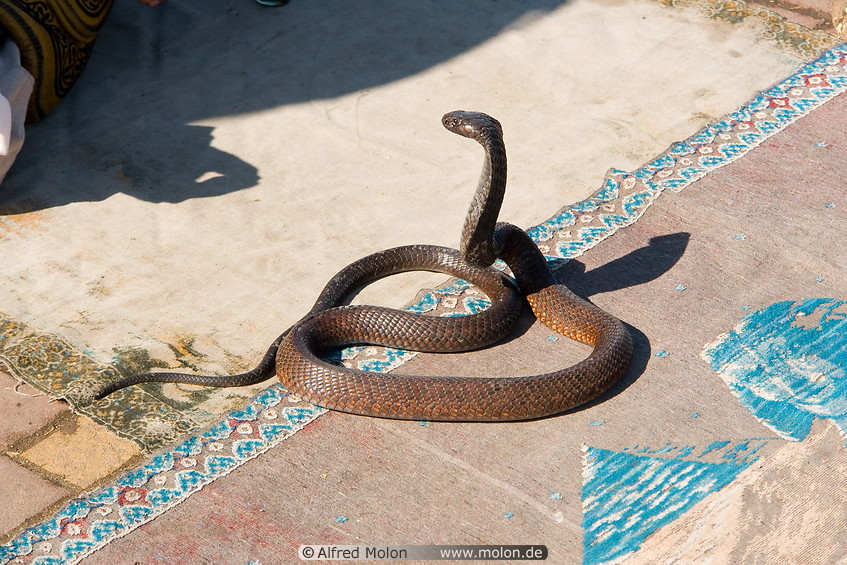
Biology:
This cobra is diurnal; mostly active during evening and early morning. It may enter human dwellings when hunting. It restlessly moves from place to place in search of prey, which mainly consists of mice, rats, poultry, frogs and snakes. Normaly, it is not considered aggressive, particularly shy of human beings and will avoid confrontation. Habitually it avoids confrontation with man, at a chance en-counter, first priority is to escape undetected. On sensing danger it lifts anterior part of its body to have a good look at its surroundings. If not provoked, it lets fall it's body and slips quietly away. However, if provoked, it hisses loudly and sways its hood to advertise its presence, and displays the hood markings to impress its adversary. It fixes its eyes to the source or annoyance, keenly following its movements. However, all the time at the lookout to have a chance to avoid conrontation and slip away. The swaying of hood with dorsal spectacle mark and ventral yellow ocellus, coupled with loud hiss, arc measures to just look as fearsome and as big as possible, to impress the enemy. Cobra attacks viciously and furiously, striking with full strength and biting savagely, chewing the bitten pan. When bitting, it hold on and chews savagely. May strike repeatedly. This snake can be exceptionally quick-moving and agile. The fangs and venom glands of both subspecies are large. The venom is highly toxic. Snake bite symptoms begin approximately 8 minutes after bite. Victims experiences anxiety, the pulse quickens, grows weak and irregular. The victim soon falls into deep coma.








No comments:
Post a Comment